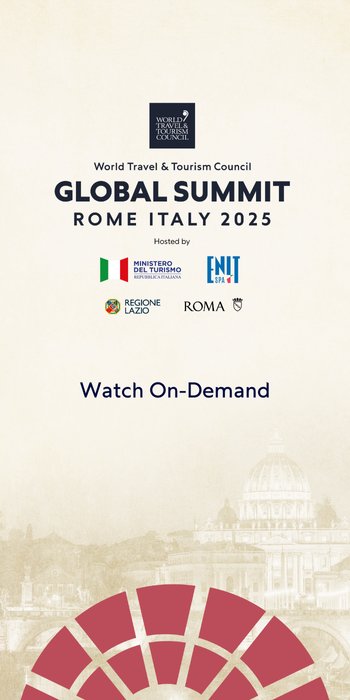Overcrowded or undermanaged? Rethinking the tourism debate

As global travel returned to pre-pandemic levels in 2024, familiar scenes of crowded streets, bustling attractions, and strained local services once again dominated headlines. The immediate response from many was to point the finger at an excess of tourists, reigniting the often-divisive debate around so-called ‘overtourism’. While the frustration of residents in popular destinations is real and understandable, blaming travellers for overcrowding is an oversimplification of a much more complex issue.
Sign in to access actionable insights
As global travel returned to pre-pandemic levels in 2024, familiar scenes of crowded streets, bustling attractions, and strained local services once again dominated headlines. The immediate response from many was to point the finger at an excess of tourists, reigniting the often-divisive debate around so-called ‘overtourism’. While the frustration of residents in popular destinations is real and understandable, blaming travellers for overcrowding is an oversimplification of a much more complex issue.
The narrative that simply equates tourism with overcrowding often misses the point. The challenges we see in many popular spots are not just a matter of visitor volume but are deeply rooted in structural issues that have been simmering for years. It is more a question of management than of numbers alone.
Uncovering the real issues
When we look closer, the pressures felt in many cities and regions are symptoms of deeper, systemic problems. Chronic underinvestment in essential infrastructure like public transport, affordable housing, and clean water creates a fragile foundation that struggles to support both residents and visitors. Poor urban planning and fragmented governance further compound the problem, leading to a reactive and often ineffective response to the challenges of growth.
These are not exclusively tourism issues; they are broad urban management challenges that affect the quality of life for everyone in the destination. Instead of resorting to punitive measures against travellers, such as new taxes or visitor caps, which often prove ineffective at reducing numbers, we need a more thoughtful, evidence-based approach to destination management. This involves moving beyond the headlines to address the structural drivers of crowding.
Different cities, different challenges
The drivers of overcrowding are not the same everywhere, and a one-size-fits-all solution is bound to fail. To understand this better, let’s consider two different types of cities and the unique pressures they face.
- City A: The challenge of concentration
A historic city with a dense cluster of world-famous attractions packed into a small area. Its narrow, centuries-old streets and fragile infrastructure were never designed for high foot traffic, and public transport is stretched thin. Visitors are naturally drawn to these few central locations, while lesser-known, yet equally fascinating, areas on the city’s outskirts remain underdeveloped and unvisited. This concentration creates intense pressure points, leading to tensions between hosts and visitors and a strain on local services.
For City A, the solution isn’t necessarily to reduce the number of tourists, but to spread them out. This could involve actively marketing attractions on the outskirts, investing in infrastructure to make these areas more accessible, and developing new, responsible tourism experiences that encourage a more dispersed pattern of exploration.
- City B: The strain of seasonality
Picture a coastal or mountain destination that experiences extreme seasonal fluctuations in visitor numbers. For a few short months, the city buzzes with activity with its infrastructure, services, and accommodation pushed to the limits. But once the peak season ends, much of the economic activity shuts down, making it difficult to sustain a thriving, year-round economy. This boom-and-bust cycle places an immense burden on the destination during the high season and offers little stability in the off-season.
For City B, the key is to manage the intense peaks and create a more balanced, year-round flow of visitors. Strategies could include developing appealing off-peak travel options, using smart technology like dynamic pricing and crowd-alert apps to manage flows during busy periods, and upgrading critical infrastructure to better handle demand when it is highest.
Call for smarter investment
The challenge of overcrowding is not insurmountable, it is a call for a more sophisticated, evidence-based approach. Effective destination management is the key to preserving the unique character of a place, the very reason people are drawn to travel in the first place. The private sector has a responsibility to help ensure that tourism growth enhances, rather than erodes, the fabric of our destinations. This is essential for the long-term health of the travel sector itself.
This is a decisive moment that calls for a united effort. Governments, businesses, and local communities must work together to turn these aspirations into action. The future of tourism depends on local support, and empowering residents by giving them a genuine say in the matter is paramount. By creating a shared vision and investing wisely, we can ensure that tourism becomes a force for good, strengthening the world's most cherished places.


















